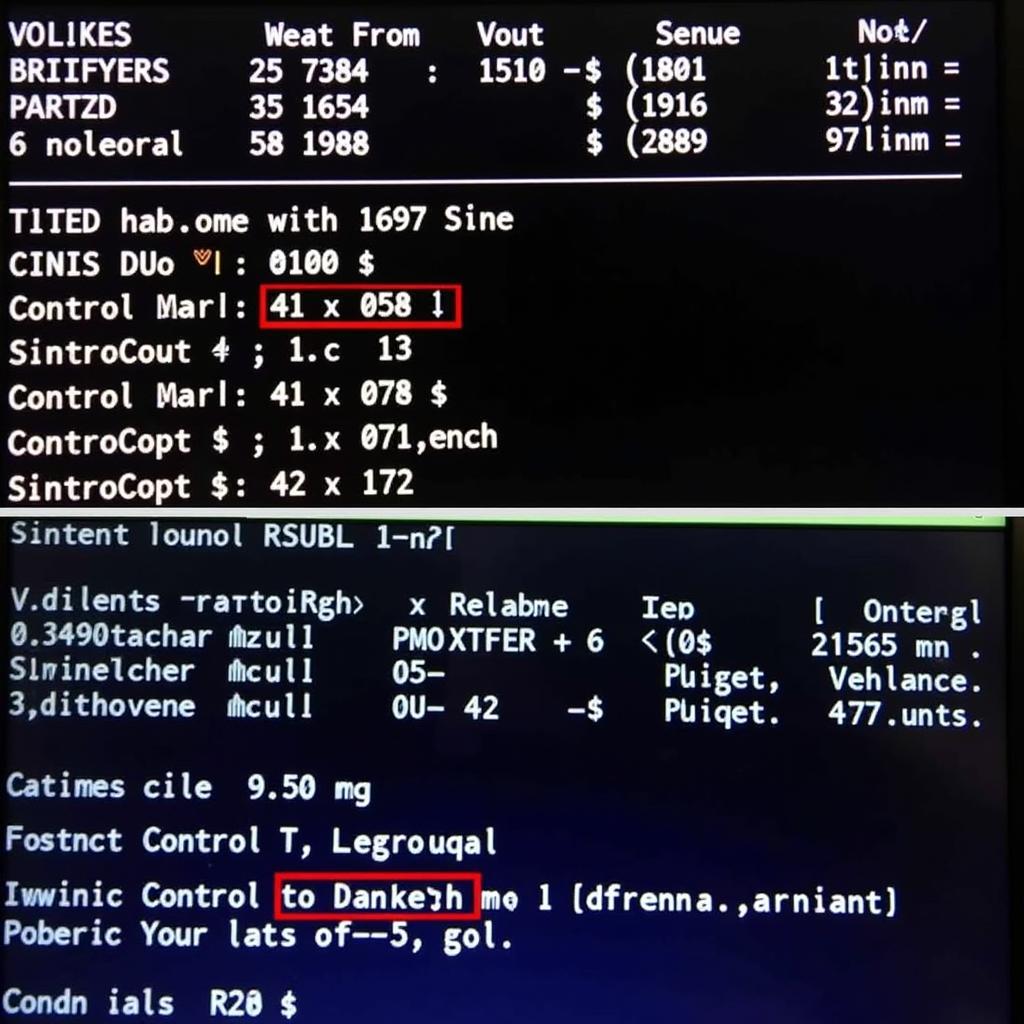A VCDS fault codes list is an essential tool for any mechanic or car enthusiast who works on Volkswagen Group vehicles. This list provides a detailed explanation of the diagnostic trouble codes (DTCs), often referred to as fault codes, that can be retrieved using a VCDS diagnostic tool. These codes pinpoint specific issues within the vehicle’s various electronic control units (ECUs), offering valuable insight into the root cause of malfunctions. Whether you’re facing engine hiccups, transmission woes, or electrical gremlins, understanding these codes can save you time, money, and frustration during the diagnostic process.
Deciphering the VCDS Fault Codes List
VCDS, which stands for “VAG-COM Diagnostic System,” is a powerful software and hardware combination designed to communicate with the onboard computers in Audi, Volkswagen, Seat, and Skoda vehicles. These vehicles come equipped with advanced onboard diagnostic systems, often referred to as OBD-II, capable of detecting and storing information about malfunctions. When an issue arises, the ECU generates a specific fault code, which can then be accessed and interpreted using VCDS.
vcds-fault-codes-list|VCDS Fault Codes List|A comprehensive list of VCDS fault codes displayed on a computer screen.
The VCDS fault code list acts as a comprehensive dictionary for these codes, providing clarity on:
- Code Definition: A concise explanation of what the code means.
- Possible Causes: A list of potential triggers for the specific fault code.
- Symptoms: Common signs and symptoms the driver may experience when the fault occurs.
- Troubleshooting Tips: General guidance on diagnosing and resolving the issue.
Utilizing a VCDS Fault Codes List Effectively
Knowing how to navigate a VCDS fault code list is essential for efficient diagnostics. Here are key steps:
-
Retrieve the Fault Code: Connect your VCDS interface to your vehicle’s OBD-II port and launch the VCDS software. Select the appropriate control module for the system you’re investigating (e.g., engine, transmission, airbags) and run a scan to retrieve any stored fault codes.
-
Consult the List: Locate the specific fault code within the VCDS fault code list. Pay close attention to the associated information, including the code definition, potential causes, and symptoms.
-
Cross-Reference: Compare the listed symptoms with the issues you’re experiencing in the vehicle to see if they align.
-
Troubleshooting: Utilize the provided troubleshooting tips as a starting point for your diagnosis. Remember to address codes in the order they appear, as some might be triggered by others.
-
Clear Codes: After addressing the issue, clear the fault codes from the ECU’s memory using your VCDS tool.
connecting-vcds-to-car|Connecting VCDS to Car|A mechanic connecting a VCDS diagnostic tool to a car’s OBD-II port.
The Power of VCDS for DIYers and Professionals
While a VCDS fault codes list is an invaluable asset, the true potential is unlocked when paired with the VCDS software. VCDS goes beyond basic code reading, offering advanced features like:
- Live Data Monitoring: Observe real-time sensor readings to analyze system performance.
- Output Tests: Activate specific components to verify their functionality.
- Adaptations and Coding: Make adjustments to vehicle settings and customizations.
mechanic-using-vcds-software|Mechanic Using VCDS Software|A mechanic using VCDS software on a laptop to diagnose car problems.
Whether you’re a seasoned mechanic or a dedicated DIYer, the combination of VCDS and a comprehensive fault codes list empowers you to take control of your Volkswagen Group vehicle’s diagnostics and maintenance.
Frequently Asked Questions about VCDS Fault Codes
Q: Can I use a generic OBD-II scanner to read VCDS fault codes?
A: Generic OBD-II scanners are designed to retrieve standard fault codes related to emissions systems. While they might pick up some Volkswagen Group specific codes, they often lack the depth and detail provided by a dedicated VCDS system.
Q: Are VCDS fault codes the same across all Volkswagen Group vehicles?
A: While there’s some overlap, different models and model years within the Volkswagen Group can have unique fault codes specific to their systems. It’s important to consult a fault code list relevant to your exact vehicle.
Q: Can I trust the VCDS fault code list to diagnose my car’s problems accurately?
A: The VCDS fault code list provides valuable guidance, but it’s essential to remember that it’s just one piece of the diagnostic puzzle. “The codes offer clues, but a proper diagnosis requires a holistic approach,” advises automotive electronics expert, Dr. Emily Carter, author of “Modern Automotive Diagnostics: Systems and Strategies.” Consider the fault code alongside other factors like the vehicle’s history, symptoms, and your own mechanical inspection.
Need More Assistance? Connect with Cardiagtech!
Navigating the world of VCDS fault codes can feel daunting, but you don’t have to do it alone. CARDIAGTECH is here to support you with a wealth of resources and expert guidance. Explore our website for more information about VCDS tools, software, and helpful guides. We’re passionate about empowering car owners and mechanics alike with the knowledge and tools they need to keep their vehicles running smoothly.

